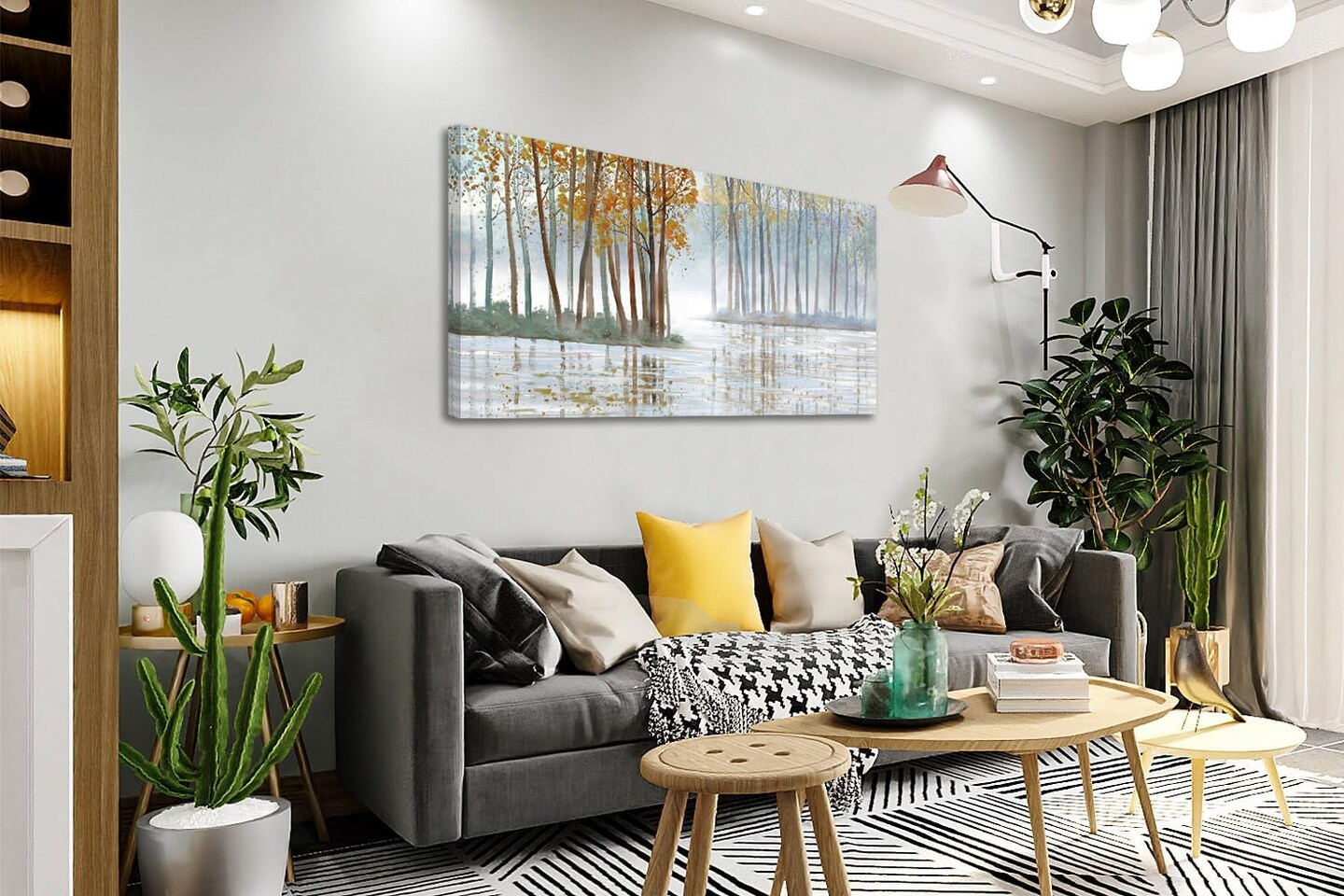Incorporating Large Art in Small Rooms: Tips for Photographers
As a professional photographer, you might often find yourself in a quandary when it comes to incorporating large art in small rooms. The thought of placing an oversized piece in a confined space might seem daunting. However, with thoughtful planning and clever techniques, you can transform a small room into an artful haven. Whether it's a gallery-worthy photograph or an abstract painting, large art can indeed work wonders in tight spaces.
At first glance, the idea of incorporating large art in small rooms might appear counterintuitive. Yet, large art has the unique ability to create an illusion of space and add a dramatic focal point to any room. This concept is particularly intriguing for photographers who are constantly on the lookout for novel ways to showcase their work and enhance their environment.

Why Choose Large Art?
Large art pieces can be a powerful statement in any room. They draw attention and can instantly set the tone of the space. For photographers, a large print of a stunning landscape or a captivating portrait can not only showcase your skills but also add a personal touch to your surroundings. The sheer size of the artwork demands attention and can even make a room appear larger by directing the eye upwards and around the space.
Creating Balance with Large Art
One of the key aspects of successfully incorporating large art in small rooms is balance. It's vital to ensure that the large art piece does not overwhelm the space. Consider the elements within the room and strive for harmony. For instance, if your art piece is colorful and vibrant, you might want to keep the surrounding decor minimalistic to prevent visual chaos.
Additionally, using other decor elements like art ledges can help in creating a layered look that complements the large artwork without overshadowing it.
Strategic Placement of Large Art
Placement is crucial when it comes to incorporating large art in small rooms. The positioning of your artwork can greatly influence the room's perception. A common strategy is to place the art piece on the largest available wall. This not only maximizes the space but also ensures that the artwork becomes the central focus.
For professional photographers, it's essential to consider the light source in the room as well. You might want to showcase your work in lighting that highlights its best features. Natural light can be a photographer's best friend, but even artificial lighting can be strategically used to enhance the appeal of the artwork.
Color Scheme and Aesthetic
The color scheme of your room should complement the artwork. If your room has a neutral palette, a bold and colorful piece of art can add the necessary pop of color and create a stunning contrast. Conversely, if your room is already vibrant, a monochromatic art piece might be more suitable.
Photographers can use their understanding of colors to enhance the aesthetic appeal of their space. Consider how the colors in your artwork interact with the room's overall decor. This interaction can either create a cohesive look or serve as an intentional contrast to draw attention to the artwork.
Incorporating Personal Touches
Incorporating personal touches can elevate the overall appeal of your space. As a photographer, consider using some of your own work as the large art piece. A cherished photograph printed in large format can serve as a meaningful focal point in your room.
Furthermore, adding layers such as rugs or other textiles can bring warmth and texture to the room. You might want to explore the concept of a layered look to see how different elements can come together to create a harmonious environment.
Maximizing Small Spaces
When working with small spaces, the arrangement of furniture and decor plays a vital role in the overall perception. Consider furniture that is multifunctional, which can help in freeing up space for the large art. Mirrors can also be a strategic addition as they reflect light and give an illusion of a larger space.
The key is to avoid clutter. Keep the room organized and let the art be the hero. You can also explore large wall art ideas that are tailored for small spaces, ensuring that every piece chosen serves a purpose and adds to the room's character.
Conclusion
Incorporating large art in small rooms is an art in itself. It requires a balance of creativity and strategic thinking. For professional photographers, it presents an opportunity to showcase their work in a bold and impactful manner. By considering the placement, balance, color scheme, and personal touches, large art can transform small spaces into captivating galleries.
As you embark on this journey of artistic expression, remember that the essence lies in making a statement through your art while maintaining the room's functionality and comfort.

FAQs
1. How can I prevent large art from overwhelming a small room?
Balance is key. Complement large art with minimalistic decor and consider the room's color scheme to ensure harmony.
2. What are some tips for choosing the right wall for large art?
Opt for the largest available wall that can serve as a central focal point. Consider lighting and how it interacts with the artwork.
3. Can large art make a small room look bigger?
Yes, large art can create an illusion of space by directing attention and making the room appear more open.

